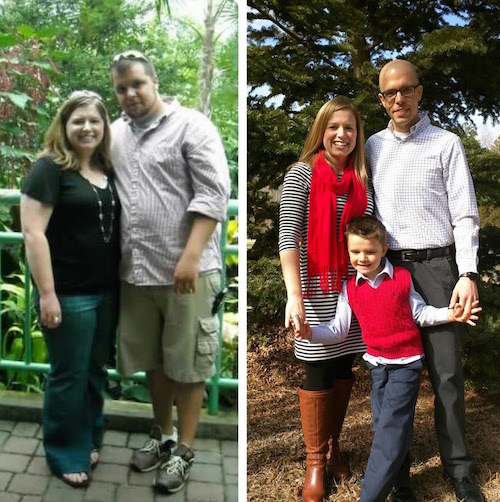Table of Contents
15 Incredible Easy Vegan Cake
. You’re probably assuming that transferring to a plant-based diet sounds like a fantastic idea, yet you don’t recognize where to start. Do not worry, you’re in the appropriate location– we’ve got the devices, understanding, and also know-how to make the adjustment very easy as well as pleasurable. We’ll answer your concerns, supply handy recommendations, and also share the methods you require.
There’s exceptional clinical evidence that numerous chronic conditions can be managed, minimized, and even reversed by moving to a whole-food, plant-based diet. Scientific research highlighted in the spots publication The China Study shows that a plant-based diet can minimize the risk of type 2 diabetic issues, heart problem, certain types of cancer, as well as various other major ailments. Lots of people also report larger health and fitness rewards, even more power, minimized swelling, and much better health and wellness outcomes after making the button.
Contents
1. Easy Vegan Chocolate Cake Loving It Vegan

Best Easy Vegan Cake
from Easy Vegan Chocolate Cake Loving It Vegan. Source Image: lovingitvegan.com. Visit this site for details: lovingitvegan.com
There are lots of other foods you can likewise enjoy– consisting of nuts, seeds, tofu, tempeh, whole-grain flour as well as breads, as well as plant-based milks. However, we suggest eating these foods in moderation, because they are much more calorie-dense and also can add to weight gain.
We know that a unexpected shift to plant-based eating isn’t for every person. We asked among our specialist contributors, Craig McDougall, MD, for his recommendations: “Add around 1,000 calories of legumes, whole grains, and starchy vegetables to your daily routine. These starchy foods maintain you full and pleased, so you’ll naturally eat much less of the animal items and processed foods that are making you unwell.” Dr. McDougall has a lot of other terrific recommendations to share.
2. Simple Vegan Chocolate Cake

Best Easy Vegan Cake
from Simple Vegan Chocolate Cake. Source Image: minimalistbaker.com. Visit this site for details: minimalistbaker.com
You do not– until you try it! Numerous people who make the button report sensation much better, having less tiredness, and also shedding weight, and also or else taking pleasure in a healthy and balanced lifestyle. We make the switch very easy with our substantial devices as well as resources.
Whole-food, plant-based eating is cheaper than you believe. Fresh fruit and vegetables goes a long way, as well as whole grains, potatoes, and beans are some of the most budget friendly bulk foods you can buy. Create meals around these staple things as well as you’ll definitely invest less than you do on a diet rich in meat and also various other animal products.
You will certainly need to plan ahead a little, yet it’s quite simple to discover whole-food, plant-based meals on the go. You can generally discover fruit as well as dishes made with pasta, rice, and also potatoes wherever you are. With a little creativity and adaptability, you can also prepare some amazing food to take with you.
There are numerous types of plant-based diet regimens, yet they all emphasize particular foods associated with heart benefits, such as entire grains, fruits, vegetables, legumes, nuts, and healthy oils like olive oil. The diet regimens that have been most studied for their influence on heart health include the Mediterranean diet, the DASH diet, as well as the MIND diet. These diet regimens are abundant in fiber, vitamins, and also minerals that aid reduced blood pressure and also LDL (bad) cholesterol, reduce the risk of diabetic issues, and aid maintain a healthy and balanced weight, every one of which can lower your danger of cardiovascular disease.
3. Easy Vegan Lemon Cake

Best Easy Vegan Cake
from Easy Vegan Lemon Cake. Source Image: www.thevegspace.co.uk. Visit this site for details: www.thevegspace.co.uk
The kinds of plant foods and their sources are likewise essential. For example, white rice and also white bread are plant-based foods, so you would certainly think they’re excellent to eat. But they are very processed, and so are depleted of many heart-healthy nutrients as well as have a high glycemic index, which indicates they can make blood glucose degrees increase and enhance cravings, leading to overeating.
A healthy plant-based meal should contain appropriate portions of veggies, fruits, whole grains, healthy protein, and healthy and balanced oils. What does this look like? The Harvard Health Eating Plate is a handy aesthetic guide developed by nourishment specialists at Harvard School of Public Health and also editors at Harvard Health Publishing.
Not a surprise, they found that individuals that followed the healthy plant-based diet (the 2nd group) had the most affordable threat for heart problem. They were likewise more active and also leaner. On the other hand, those who adhered to the unhealthful plant-based diet (the 3rd group) had a significantly greater risk for heart problem.
What is the ideal plant-based diet for you? You don’t need to go complete vegetarian or vegan (avoiding all animal products, also eggs and dairy products) to obtain the best heart health and wellness advantages. The emphasis needs to be on eating even more of the appropriate plants, staying clear of the incorrect kind, eliminating junk foods, and also moderating your intake of much healthier pet items.
4. 2 Minute Vegan Soda Cake Recipe

Best Easy Vegan Cake
from 2 Minute Vegan Soda Cake Recipe. Source Image: www.thespruceeats.com. Visit this site for details: www.thespruceeats.com
There are lots of debates concerning which diet is best for you.Nevertheless, health and wellness as well as health communities concur that diet regimens highlighting fresh, entire ingredients and also lessening processed foods are superior for overall wellness.The whole-foods, plant-based diet does simply that.It concentrates on minimally processed foods, specifically plants, and also is effective at boosting weight reduction and enhancing health.This short article assesses everything you require to understand about the whole-foods, plant-based diet, including its possible health and wellness benefits, foods to consume as well as a sample dish plan.Share on Pinterest
Veganism is typically specified as living in a manner that avoids consuming, using, or exploiting pets as high as reasonably possible. While this leaves area for private preferences as well as barriers, the general intent is that minimal harm is done to animals with life selections.
” Plant-based” refers to a diet that entirely or mainly consists of plant foods. A whole foods, plant-based diet also leaves out oils and processed packaged foods. “Vegan” suggests that animals are left out from the diet, products, and also lifestyle choices.
5. Simple Vegan Chocolate Cake Recipe — Dishmaps

Best Easy Vegan Cake
from Simple Vegan Chocolate Cake Recipe — Dishmaps. Source Image: www.dishmaps.com. Visit this site for details: www.dishmaps.com
Being plant-based and vegan can go hand-in-hand. Some individuals might start as one and also take on the intents or concepts of the various other strategy, applying honest, health and wellness, and also environmental factors to consider to their way of living all at once.
” Plant-based” generally refers to one that consumes a diet based largely on plant foods, with limited to no animal-derived products. A entire foods, plant-based diet means that oils and processed packaged foods are furthermore left out.
The major concept is to make plant-based foods the main part of your dishes. “A plant-based diet highlights foods like fruits, veggies, as well as beans, as well as restrictions foods like meats, milk, and eggs,” Manaker states.
6. Simple Vegan Chocolate Cake

Best Easy Vegan Cake
from Simple Vegan Chocolate Cake. Source Image: minimalistbaker.com. Visit this site for details: minimalistbaker.com
Consider “plant-based” as a wide group of diet regimens, with other extra specific diet plans falling under its umbrella. As an example, the Mediterranean diet is a variation of a plant-based diet due to the fact that although it integrates fish and poultry, the focus is on plant-based foods, Manaker states.
An additional point you should be aware of: When you very first switch to a plant-based diet, you may observe an uptick in defecation, diarrhea, or bowel irregularity. That’s because many plant-based foods are filled with fiber, which normalizes bowel movements, Manaker claims. Take into consideration gradually integrating plant-based foods in your diet to provide your body time to adjust, and also make sure to consume plenty of liquids throughout and after you make the button to consuming extra plants.
The plant-based diet is a category of diets that have this in common: “All plant-based diet regimens restrict animal-derived foods in favor of plants,” Yule says. Instead of a diet fixated meat as well as milk, the starring functions are played by veggies, fruit, as well as entire grains. It’s a fresh, tasty strategy to eating and has actually been revealed to have substantial wellness benefits, consisting of weight management as well as condition prevention.
7. Easy vegan strawberry cheese cake no bake Exceedingly

Best Easy Vegan Cake
from Easy vegan strawberry cheese cake no bake Exceedingly. Source Image: www.exceedinglyvegan.com. Visit this site for details: www.exceedinglyvegan.com
Some of the most important health choices you make will remain in the grocery store. In a ideal globe, we would certainly all go right out to our yard and simply pick our vegetables and fruits. While that is not the truth for a lot of us, it is not hard to discover healthy and also nutritious foods at your neighborhood market.
Plant based diet plans are high in fiber, intricate carbs, as well as water content from vegetables and fruit. This may aid to maintain people really feeling fuller for longer and enhance energy usage when resting.
Researchers have additionally checked out whether adhering to a plant based diet can help deal with diabetes. The writers of a 2018 review suggest that vegan and also vegan diet regimens might assist individuals with diabetic issues decrease their drug requires, drop weight, and improve other metabolic markers.
We consist of items we believe work for our readers. If you get via web links on this page, we may make a little compensation. Right here’s our process.A plant based diet is one that focuses on only or mainly foods from plant sources. This way of eating might have advantages for both a person’s wellness as well as the planet.In this post, we consider what a plant based diet is, the health advantages, as well as what dietary considerations a person need to make before switching.
8. Easy Vegan Carrot Cake

Best Easy Vegan Cake
from Easy Vegan Carrot Cake. Source Image: annabanana.co. Visit this site for details: annabanana.co
The even more you exercise preparing your very own meals, the more you’ll begin to delight in the procedure. Prior to you recognize it, you’ll have a long list of favorite plant-based meals and snacks to select from.
The web is likewise excellent for getting in touch with other plant-based people. Join your local No Meat Athlete running group, or get entailed with the Veggie Boards Forum or the Plant-Based Diet Subreddit, where you can exchange suggestions and information with people in the know.
9. Simple Vegan Chocolate Cake

Best Easy Vegan Cake
from Simple Vegan Chocolate Cake. Source Image: minimalistbaker.com. Visit this site for details: minimalistbaker.com
Whatever your reason for embracing a plant-based diet, changing the way you eat probably isn’t the only thing that’s going to influence it. So many various other practices can affect your health, your physical fitness, or the dimension of your carbon footprint.
Yes, a plant-based diet is 100% the method to go, London states. “The reason why trend diet plans backfire is because they’re inspiring at initially, but ultimately call for elimination as well as limitation, which isn’t a means of life!
10. Easy Vegan Yellow Cake Recipe

Best Easy Vegan Cake
from Easy Vegan Yellow Cake Recipe. Source Image: www.thespruce.com. Visit this site for details: www.thespruce.com
People select a plant-based diet for a range of reasons consisting of worry regarding the treatment of animals, health and wellness factors, environmental problems or because of preference and public opinion. Plant-based diet regimens are ending up being more prominent and if they are wellplanned, can support healthy and balanced living at every age and life-stage.
11. The Best Vegan Chocolate Cake Nora Cooks

Best Easy Vegan Cake
from The Best Vegan Chocolate Cake Nora Cooks. Source Image: www.noracooks.com. Visit this site for details: www.noracooks.com
Vegans– do not consume any type of pet items at all, including honey, milk and also eggs. Several shop got prefabricated products may contain pet components so the tags of all manufactured items do require to be checked out very carefully.
Diet plans fixated a variety of plant foods offer affordable, delicious and healthy options. Plant-based diets which are abundant in beans, nuts, seeds, vegetables and fruit, whole grains such as oats, rice, as well as cereal based foods such as breads, as well as pasta can give all the nutrients needed completely wellness. This includes important fats, healthy protein, vitamins, minerals as well as a lot of fiber also.
12. Recipe Easy Vegan Carrot Cake The Veg Space

Best Easy Vegan Cake
from Recipe Easy Vegan Carrot Cake The Veg Space. Source Image: www.thevegspace.co.uk. Visit this site for details: www.thevegspace.co.uk
Well balanced plant-based diet plans, that are likewise reduced in hydrogenated fat, can assist you handle your weight and also might reduce your danger of kind 2 diabetes, cardiovascular disease as well as some cancers cells. Nevertheless, similar to any kind of diet, plant-based nourishment requires to be intended.
Plant sources of iron include dried fruits, wholegrains, nuts, environment-friendly leafy veggies, seeds and pulses. The kind of iron in plant foods is soaked up much less successfully contrasted to iron from animal obtained sources such as meat as well as eggs. Eat a lot of fruits and vegetables rich in vitamin C to help the iron to be soaked up e.g. citrus fruits, strawberries, environment-friendly leafy veggies as well as peppers.
13. The Easiest Gluten Free and Vegan Chocolate Cake The

Best Easy Vegan Cake
from The Easiest Gluten Free and Vegan Chocolate Cake The. Source Image: theprettybee.com. Visit this site for details: theprettybee.com
” It’s a good concept to see your medical care doctor to obtain a fundamental framework of what a healthy diet must look like for you, especially if you have an hidden health problem or have actually carried weight loss surgical treatment, which can impact just how your body procedures nutrients,” says Dr. Kirlew. “For example, if you have diabetics issues and also intend to consume a healthy diet, you wouldn’t always want to consume a lot of fruit.”
Some people eating a plant-based diet may select not to consume meat as well as pet products for different reasons. A vegan diet excludes all meat and pet items (meat, fowl, fish, fish and shellfish, milk and also eggs), whereas a vegetarian diet excludes meat, fowl, fish and seafood. There are a couple of variations of a vegetarian diet that depend on whether you eat or leave out eggs, dairy products and also fish (see table below).
14. Vegan Chocolate Chip Cake Recipe Vegan Richa

Best Easy Vegan Cake
from Vegan Chocolate Chip Cake Recipe Vegan Richa. Source Image: www.veganricha.com. Visit this site for details: www.veganricha.com
The essential thing to note when checking out the proof is that vegans and also vegetarians often tend to lead a healthier life on the whole, which clarifies some, yet not all, of the reduced threat seen in these teams. Individuals that comply with a vegan diet may be much more physically active as well as drink less alcohol.
To consume even more plant foods, you don’t necessarily need to embrace a vegan or vegetarian diet. For many of us, just making an initiative to eat much less processed foods and also even more plant foods every day will do marvels for your health as well as threat of heart disease.
15. Recipe Easy Vegan Carrot Cake The Veg Space

Best Easy Vegan Cake
from Recipe Easy Vegan Carrot Cake The Veg Space. Source Image: www.thevegspace.co.uk. Visit this site for details: www.thevegspace.co.uk
A plant-based diet isn’t instantly healthy. Hot chips, biscuits, as well as soft drinks can all be vegan/vegetarian foods. Too much-saturated fat, sugar, as well as salt from any resource isn’t great for your health and wellness. An increasing number of processed plant foods are making their method onto grocery store shelves from vegetarian hotdogs to vegan pleasant deals with. Some of these foods may really consist of even more salt and also sugar than normal items.
Recommended Products:
The benefits of a vegan diet can never ever be over-emphasized, and remarkably, lots of people have determined to go vegan for many reasons. It is no surprise that it has actually ended up being significantly preferred, specifically considering that there are numerous wellness advantages affixed to being vegan.
When done right, you can rest assured that such a diet could be the ultimate dish selection that will present you with numerous health and wellness benefits, including a leaner waistline as well as boosted blood-sugar control.
However, one have to be extremely careful with eating diet(s) based solely on plant foods. While there are advantages connected, like the majority of points, there are risks of nutrient shortages.
You’re below due to the fact that you currently recognize a vegan diet is healthier than any other diet that exists. Research study reveals there’s been a 600% increase in the variety of individuals who have made the switch to a vegan diet.
With the expanding variety of plant-based fanatics constantly on the rise, there has never been a much better time to eliminate meat as well as dairy products from your diet.
If you’ve spent at any time in any way on social media sites, you ‘d possibly assume a good section of the globe was vegan.
And why not? With over 90 million #vegan posts on Instagram alone, it’s simple to say why Plant-based foods are just one of the hottest patterns in the food market now.
Research study has actually shown that over 90% of individuals have fallen short to transform their diet efficiently. Why is this? Filtering via dishes to locate the most appealing, purchasing groceries you may never have actually acquired previously without even making sure which one works, developing a meal strategy, and also specifically just how to get started.
It is just a lots of serious work, and let’s be sincere, so many people are not prepared to handle such extensive work together with our daily businesses. Most of your initiative and inspiration are gone also prior to you begin.
This is exactly why The Plant-Based Diet Cookbook has been prepared. Isn’t that much better?!
The Plant-based Diet Cookbook will cover every little thing you require to understand so you can comply with a vegan diet, a healthy as well as correct method. Consider it a thorough novice’s guide to the vegan diet.
It works as your ultimate overview for transitioning to a healthy plant-based diet without needing to do all the homework.
Whatever you require to understand about making plant-based diet study has actually been provided in a solitary bundle– consisting of all the research study, planning, and prep.
Every one of the hard work has been done and also assembled into a single book. You have accessibility to pre-made grocery wish list, meal strategies, over 100 vegan recipes, 30-day strategies, and also more.
There is no requirement to count your calories, consider your food, or perhaps having a hard time to discover something healthy and scrumptious at the same time either.
Your whole source for transitioning into a vegan diet has actually been offered your front door. This program additionally has everything you ‘d need to make the procedure exciting and much less tiring, as well as the wellness and also evaluate toss advantages followed that.
HOW HEALTHY IS A VEGAN DIET?
There’s no argument when you look at the latest proof.
Eating a whole-food, plant-based vegan diet, without the intake of meat or milk is beneficial for our wellness and wellness.
Vegan foods such as vegetables, fruit, grains, vegetables, nuts, as well as seeds are low in hydrogenated fat. Also high-fat plant foods (such as avocados, nuts, and seeds), consist of no cholesterol whatsoever, so a vegan diet is cholesterol-free.
A vegan diet is likewise packed with anti-oxidants and fibers which can boost your health, your body, and also muscle recovery.
Eating a whole-food, plant-based diet without meat, dairy products or eggs can aid decrease your cholesterol and also improve your heart health.
THE VEGAN DIET RECIPES YOUR ABOUT TO DISCOVER WORK BY TWO FUNDAMENTAL PRINCIPLES
1. Put maximum nutrition INTO your body… and…
2. Reduce or eliminate toxins and “interference”.
The first one seems quite evident … People who eat a vegan diet consume a wide range of fruits, vegetables, beans, lentils, chickpeas, nuts, and also seeds. These foods are packed with necessary nutrition.
The second concept is equally as essential, yet less obvious. It means that when we prevent contaminants hidden packaged/processed food … and also the many covert toxic substances in meat options, our bodies start to clean as well as detoxify.
This enables our cells to expend less energy in really eradicating foreign substances and even more on restoring, development, as well as renewal.
And also therefore we discover a myriad of wellness advantages when we take on a vegan diet.
Currently … Imagine seeing and feeling the favorable adjustments in your body and health and wellness than any other diet you have actually tried before.
Because you will certainly be getting all the vital vitamins, minerals, proteins, carbohydrates as well as fats and the accompanying dishes offer healthy and balanced and yummy methods to appreciate them.
There’s only one little issue …
Now … Imagine seeing as well as really feeling the positive modifications in your body as well as wellness than any other diet you have actually attempted before.
Because you will certainly be getting all the necessary vitamins, minerals, proteins, carbs as well as fats as well as the coming with dishes use healthy and also tasty methods to enjoy them.
Why The Majority Of People Fail To Stick To A Vegan Diet?
Now giving the impressive results that consuming a vegan diet, you would certainly assume it was simple to adhere to it?
Fact is, a plant-based way of life does not imply you need to force down the exact same boring, dull foods every single day.
As well as on top of that, preparing tasty, nutritious vegan dishes does not have to be tough whatsoever. The Plant-based cookbook gives yummy, very easy to prepare dishes that are healthy.
And currently, for the very first time …
We’ve Teamed Up With The Most Influential Community Of Plant-Based Enthusiasts …
… To Bring You Over 100 Flavourful High Protein Vegan Recipes
Certain, recipe books from a leading cook are nice. However suppose you had one from a reputable chef (yours genuinely!) AND ALSO numerous living, active, healthy plant-based specialists?
Well, ask as well as you will receive. The Plant-based cookbook is full of dishes that can be prepared as well as prepared under 30 minutes or much less.
With The Plant-Based Recipe Cookbook you’ll get that much and also more. The dishes come is a gorgeous full-color cookbook that you can watch right from your computer, tablet or phone from any kind of area.
It is the utmost guide for making the Vegan Diet remarkably good-tasting, fun and packed with the selection that not just makes you healthier but additionally pleases your taste buds as well as yearnings.
It’s whatever you could ever want in a overview for how to consume effectively the Vegan method without jeopardizing taste or ease.
The cookbook has real-food real food that you can easily discover at your neighborhood supermarket, consisting of a range of tofu, tempeh soy products, fruits, veggies, nuts, and also seeds.
With the appropriate ingredients, you will certainly have the ability to prepare delicious dishes effortlessly.
So even if you are a meat-eater and wish to attempt a vegan for 30 days, then there are lots of meat-free recipes that you will certainly love!
The Plant-Based Dish Cookbook Is For ANYBODY Serious Regarding GROWING On A Vegan Diet– Permanently!
The dishes that you will discover in this publication are universally loved so it does not matter if your an exclusive professional athlete or a stay-at-home mommy, there are dishes for everybody to take pleasure in.
Bear in mind: When you take in foods stemmed from plants as well as eliminate animal items, you will certainly start to set off a wave of rejuvenation throughout your body one that’s visible on your stomach, your muscle mass tone, skin, hair, face and far more.
This is simply one reason numerous people from all profession are resorting to the Plant-based diet because it cuts out undesirable things like sugars and also fine-tuned grains.
The excellent thing about eating plant based foods is you can eat a whole lot without fretting about calories or putting on weight, this holds true especially when you focus on entire foods. This isn’t around consuming in moderation, no, it’s about living abundantly off the great stuff!
This is what makes a Plant-based diet work is being able to make a range of meals that taste good to you … to ensure that you never ever get burnt out and constantly feel wonderful regarding what you’re eating.
Plant-Based Diet Cookbook Review
What Is The Plant-Based Diet Cookbook?

Now, you’ll understand that a great deal of people have actually located some joy in changing to a plant-based diet– and check out you also. You’re below. From celebs to professional athletes to average Joe’s, everybody changes to a plant-based diet for the exponential wellness, weight-loss, as well as efficiency benefits that come with it.
Plant-based Recipe Cookbook is your supreme guide to making fast and also simple however delicious food that are originated from plants.
If you have been living the vegan way of life or just intending to start a vegan diet, this cookbook is best to aid you with your change since it makes the entire experience delightful. Other than having a option of over 100 mouth sprinkling dishes and also understanding what to cook and exactly how to prepare it, you will not need to invest way too much time in the kitchen.
People acquiring interest of the vegan diet has actually been boosting via the years and one of the most usual reasons for going vegan are: the health advantages of a plant-based diet, animal welfare, ethical values, environmental advocacy as well as individual preference.
By selecting the vegan diet you are selecting your wellness. Another interesting benefit is weight loss, contrasted to other diets, vegans consume marginal calories.
Others are disputing that meat and dairy is critical to be healthy and balanced but over and over again vegans confirm them that pet based products are not necessary to thrive and live a great and also healthy life due to the fact that there are vegan alternatives that will make your diet a holistic one.
Many studies have verified that eating a plant-based diet successfully deals with weight loss, weight, cardio health, power degrees, muscle mass development, digestion, inflammation, physical look, as well as more. Lots of people have made a decision to go vegan from principles to ecological concerns also.
We can all concur that transitioning to a brand-new diet is never simple, generally since of all the prep work and also plans that come with it. This program has made transitioning simple and interesting given that all the research as well as planning have actually been accomplished. You simply need to get your duplicate as well as get tangled up with good health.
The Plant-Based Diet Cookbook is an online program that is much even more than simply a vegan cookbook. It gives you with everything you require to learn to comply with as well as enjoy a plant-based diet.
1. Recipe Cookbook
2. 30-Day Jumpstart Guide
3. Green Smoothie Lifestyle Guide
4. Grocery Shopping Lists
From what you’ve seen, you’ll understand that this program is more than simply a diet plan. It is a perfect diet buddy that will help you change your life right into one that comes with unbelievable health and wellness and weight-loss benefits. This consists of fat loss, enhanced power, longer life expectancy, fuller muscles, enhanced skin, better food digestion, reduced swelling, just to point out a couple of.
You will additionally have understood that this program is electronic, which means you have instant access as soon as you buy your duplicate, and also you can start as rapidly as feasible– no delays. You don’t require to pay shipping costs or wait for delivery; you can merely download the material onto your mobile phone, tablet computer, laptop, or home computer. This makes it quick as well as practical for you to accessibility whenever and also anywhere you’re on the go, whether you’re on trip, mosting likely to the grocery store or in the kitchen to start food preparation.
If you’re having any type of uncertainties about a plant-based diet, why not give The Plant-based Diet Cookbook a try safe. There’s a 60-Day Money-Back Guarantee, which permits you to try this program free of cost for two months. Possibilities are you’ll only require to glance the program or take a couple of bites to experience simply exactly how tasty a plant-based diet could be. I ensure that it will make you look good.
Who Created The Plant-Based Diet Cookbook?
The author and maker of this dazzling program are Justin Kaye’s. He determined to go vegan after going to a nutrition conference and learning about the many unbelievable wellness, fitness, and weight-loss benefits that include eating a plant-based diet. Today, he has actually become popular as well as very searched for for his very easy approach of transitioning right into the vegan diet.
Justin Kaye’s Vegan Recipe Cookbook features more than 100 Delicious, Done-for-You Plant-Based Recipes, that are incredibly easy to make. You’ll become your very own cook quickly and also will maintain your friends and family healthy along the road.
Justin shows you just how to prepare delicious healthy and balanced vegan dishes that are also terrific for sustaining your exercises as well as helping you drop weight. You will certainly learn every element of food preparation for healthy and balanced living as well as getting to physique goals.
As well as it’s more than just a cookbook, “Plant-based Recipe Cookbook” is a total plant-based nutrition guide packed with Cooking techniques, Nutritional Tips and also Dieting Strategies …
What You’ll Learn From The Plant-Based Diet Cookbook?
The Plant-based Diet Cookbook is a thorough program that does a lot more than simply a vegan cookbook. It is your ultimate guide to go vegan as well as to take pleasure in every last little bit.
They can be easily made without elegant tools or ingredients, meal strategies, way of life ideas, transitioning suggestions, a checklist of benefits, listings of common blunders to avoid making, a healthy smoothie overview, and a great deal of other exciting web content. The program even comes with a 30-Day Quick Start Guide to aid you jump-start your new venture and also develop brand-new, healthy habits that will assist you thrive.
Here’s a hint on what to expect from this program and the benefits that come with it:
The Main Cookbook
1. About the Author
2. Making the Switch to a Plant-Based Diet
• Don’t Expert Perfection
3. Health Benefits of Eliminating Animal Products From Your Diet
• Increased Weight Loss
• Increased Energy Levels
• Live Longer
• Fuller, Harder Muscles
• Improved Skin
• Reduce Inflammation
• Better Digestion
4. Proteins, Carbohydrates, and Fats
5. Sample Meals
6. Peanut Butter Banana Quinoa Bowl
7. Blueberry Banana and Peanut Butter Muffins
8. Potato Salad
9. Black Bean and Corn Salad
10. Roasted Chickpea Wrap
11. Veggie and Hummus Sandwich
12. Stuffed Sweet Potatoes
13. Burrito Bowl
14. Protein Bars
15. Smoothies
16. Shakes
30-Day Jumpstart Guide
1. Introduction
2. Daily Meal Plans
Green Smoothie Guide
1. Why Greens?
2. Benefits of Green Smoothies
3. What are the Best Greens You Should Use
• Other Beneficial Greens You Might Want to Look At
• Are Some Greens Better Than Others?
4. What Are Smoothies and How Do You Make One
5. Are Smoothies Safe? What are Common Mistakes to Avoid?
• Not Rotating Greens
• Not Checking for Allergies
• Focusing on Fruits Instead of Veggies
• Not Keeping Things Natural
• Not Using a Good Blender
• Not Using Proper Recipes
6. Healthy and Yummy Smoothie Recipes
• Orange Spinach Surprise
• Green Avocado Smoothie
• Green Detox Smoothie
• And more
7. Making Smoothies a Part of Your Life
+ Grocery Shopping Lists and a free 7-Day Vegan Meal Plan.
Pros & Cons of Plant Based Recipe Cookbook 2.0 program:
What you will get when you buy Plant Based Recipe Cookbook 2.0 product:
- The Plant Based Recipe Cookbook 2.0; over 100 delicious vegan recipes.
- Bonus1: THE VEGAN DIET 30 DAY JUMPSTART GUIDE for free.
- Bonus2: The GREEN SMOOTHIE LIFESTYLE free ebook.
- Bonus3: YOUR VEGAN GROCERY LIST for free.
- Bonus4: the 4 Free Meal Plans.
Testimonials
TARA
Tara matured on a regular southerly diet of substantial meat amounts offered with fried and also starchy sides. Via her high school years, she was able to keep her weight down with acrobatics as well as an energetic way of life, yet she started to battle with her health after the birth of her child. Tara was managing constant frustrations, clinical depression, persistent constipation, tiredness, ulcers, sinus infections, as well as extreme PMS signs and symptoms as well as high cholesterol, high blood pressure, as well as stomach troubles.
After ending up being aggravated with her devastating health and wellness as well as the ever-growing list of pills, Tara decided to check out a gastroenterologist. To her surprise, it was simply advised that she switch to a diet of little to no pet products and also high in unprocessed fruits and vegetables. She almost instantly lost 25 pounds as well as chose to discover more concerning what the plant-based globe was all about.
ADAM
Adam was always much heavier than the majority of his close friends maturing, yet in spite of his weight, he was able to preserve an active way of living playing basketball, hill biking, as well as various other teen outdoor activities. Points changed in university with his newly found flexibility, leaving him less time for an energetic way of life. By the time Adam turned 28, he evaluated 290 extra pounds as well as had a 44-inch waistline size. That same year his wife brought to life their child, and also Adam felt a newfound inspiration to get back in shape to take pleasure in activities with their son.
Adam tried low-carb diet regimens, prepackaged weight-loss dishes, drinks, as well as daily working out, yet he had not been seeing any results. He spoke with his better half and also determined to go one week with no meat, no cheese, no oil or processed foods. Soon that week developed into two years and Adam shed an AMAZING 135 pounds! His success additionally motivated his spouse to adopt a plant-based diet.
KRISTIE
Kristie was virtually 300 extra pounds when her mother died of colon cancer. Her mom’s passing left her ravaged, depressed, and also grappling with the fact that she could be headed down the exact same course if she really did not make a modification. One day while she was laying down crying, she listened to a voice state, “If you do not intend to be fat, do something regarding that!”
That exact same day she googled plant-based diet regimens as well as determined to give it a try. The first 30 days were the hardest, however was she able to stay on the wagon. To her awe, after just a month she had actually currently lost 16.5 extra pounds and located that she had really begun to appreciate the plant-based recipes she was making. With her commitment, the outcomes maintained coming!
BETHANY
Like many individuals, Bethany’s weight-loss trip included a variety of different types of diet plans. She ‘d attempted different fad and also crash diets. She saw her parts, counted calories, and also extra.
By the time she was 23 she weighed over 230 extra pounds, her hair was thinning, her skin was erratic, she had consistent migraines, as well as her mood and energy levels were swiftly declining.
She right away purchased the plant-based publication as well as never ever looked back from there!
The # 1 trouble with the “Plant-Based Diet”? ( addressed).
Unless you’ve been hiding under a rock for the last pair years, I’m certain you’ve come across the “Plant-Based Diet”.
Whether you have or otherwise, what you probably DON’T realize is that a plant-based diet is the fastest expanding diet in the world right now. From celebs, chefs, elite athletes … even physical fitness professionals– everybody aspires to try it or embrace it.
And for good factor! Due to the fact that no other diet or eating strategy offers so many advantages so quick:.
– Increased Energy.
– Clearer Skin.
– Lean, Muscular Body.
– Boosted Libido.
– Greater Mental Clearness.
– All Day Endurance.
– Much better Workouts.
– And even more.
The listing continues. Talk to anyone who’s actually consumed plant-based diet for even a complete month and also possibilities are, they’ll rave about the changes they started seeing in their body.
Now, the # 1 issue …
You see, without a doubt the largest complaint we hear from lots of that check out the Plant-Based way of living is ‘ dull’ or that it’s as well tough.
Frequently, individuals find out the core concepts, experience results … however then get stuck eating dull dishes of the exact same foods over and over once again.
Today – that issue is totally fixed for you with the something my friends over at Plant-based have produced– their first-ever Plant-based Cookbook.
Go below to try the exceptionally tasty Plant-Based Cookbook.
Simply FYI, The Global Rise of Plant-based Eating isn’t a Fad, In truth it’s loaded with tens of thousands of individuals in fact THRIVING on a Plant-based diet.
Inside, you’ll not only get 100+ delicious mouthwatering dishes, they’ve additionally consisted of some great benefits as well – to aid you get started as fast as possible. Like the benefit “Green smoothie mix Lifestyle Book” – which details some fantastic smoothie recipes that that tastes fantastic and also are extremely easy to make.
Not to mention they have lots of various other benefits, which you’ll see on the web page.
( There’s even a benefit that helps you address one more huge issue … which is how to eat in restaurants with close friends as well as have actually a. social life, while remaining purely Plant-based.).
Conclusion
Altogether, we simply suggest that you attempt The Plant-based Diet Cookbook if you’re intending to transition right into a vegan diet for weight reduction and optimal health and wellness. All the essential homework and also study has actually been done for you, and all you require to do is simply to purchase the delicious info, recipes, meal strategies, suggestions, and also grocery store wish list. So can merely indulge in the abundance of time as well as initiative taken by the maker and also simply study receiving the benefits of going vegan.
A lot of people are transforming vegan because of its health and wellness benefits as well as some for their cruelty-free as well as environmental advocacy. Switching to the vegan diet may not be very easy yet it can be done and it can be fun. With this Plant-based Recipe Cookbook, you can be certain that transitioning to vegan diet will certainly be a joyful trip.
You will never ever have to second hunch what to eat or just how to prepare it since the program makes it easy for you to begin as well as preserve a healthy vegan diet. Whatever your reason is, you can try the tasty dishes that will improve the health of your mind and body.
To Further Speed Your Success And Results With The Plant-Based Recipe Cookbook, We’re Also Giving You Bonus Gifts Worth $165 Absolutely Free!
As a special one-time deal for anybody who acquires on this web page now, we’re also mosting likely to include for free five effective Plant-Based guidebooks that take your results to the following degree.
These handbooks aid combat 2 biggest reasons why individuals do not obtain the start they require to stay vegan … If you’re still unsure regarding this program, why not get on the 60-Day Money Back Guarantee offer and also experiment with this program safe for the following two months. I can guarantee that you will certainly be surprised at exactly how delicious vegan is and also how excellent it makes you feel and look. It’s an offer you will certainly be much required to approve.
Wish to eat some delicious recipes as soon as TONIGHT?
Go right here to obtain your outstanding Plant-based cookbook today – while it’s still for sale.
You’re going to LOVE the fantastic Plant-based meal concepts in there!
The Plant-Based Recipe Cookbook will reveal you straightforward methods to stay healthy and balanced as well as obtain the type of body you’re happy of when eat any one of these tasty vegan recipes.
Want to feel even more invigorated by getting rid of excess weight?
Intend to improve your health and fitness and also in general well being?
Intend to save more money on takeouts and convenience food?
If yes
This Is For You
Adhering to a healthy, well balanced vegan diet guarantees a host of health advantages as well as avoidance of a few of the significant diseases striking individuals.
It can aid decrease your danger of chronic diseases like cardiac arrest as well as type 2 diabetes mellitus.
Not simply that, it urges self control by limiting your nourishment to particular foods as well as getting rid of processed foods.








